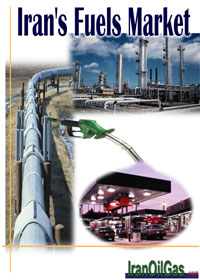Statistical and Analytical Reports
Iran's Fuels Market
 Preface:
Preface:
Why Iran will have to open up its domestic gasoline market to foreigners
The annual growth rate of domestic consumption of gasoline in Iran has already crossed an alarming level.
On the one hand, the volumes of gasoline produced by the 9 oil refineries of Iran have remained far below the demand for years, forcing NIOC to import increasingly huge volumes of the product at hiking prices. On the other, the facilities used for importing, storing and distributing the product are being overstretched and have come under enormous pressure to cope up with the needs.
Although various debates on how to tackle the issue have not been able to produce any concrete solution to the problem, they have one point in common; ‘the situation can simply not continue’.
Not only the vast amounts of cash involved for importing gasoline and distributing it, at heavily subsidized rates, are mounting great pressure on the treasury of the country, but the social injustice seen in allocating the subsidies to the minority of the population with private cars is an additional moral pressure on the State authorities in Iran.
As it is, the public transport system in Iran is quite inefficient and many economists believe that the huge State subsidies for fuels should be directed towards straightening out that incompetent sector, which will not only reduce the cumbersome traffic congestions, but will also effectively curb Iran’s gasoline consumption.
Many analysts believe that sooner or later Iran will have to open up its domestic fuel supply system to foreign companies. The prerequisite for which is to liberalize fuels prices in line with the global rates, foreseen in the 4Th Development Plan of Iran (April 2005-April 2010).
Foreign companies interested in that eventuality must know beforehand how the system is functioning now.
IranOilGas Network has prepared a report on “Iran’s Fuels Market” for the purpose.